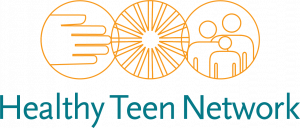How can sex educators ensure that students of all sexualities and genders feel 'seen' and affirmed? This training will cover the basic knowledge instructors need to feel competent leading discussions and answering questions, and will help build skills to create inclusive environments.
Training Hub
The Sex Education Collaborative Training Hub lists trainings for sex educators, facilitators, and other professionals on best practices for sharing important information with clients and the public. From teaching anatomy inclusively to effectively addressing bias in the classroom to addressing racial justice and equity in sex education, the Training Hub includes trainings, technical assistance, and policy support from state, regional, and national leaders in the field of sex education.
Please note: The Training Hub includes both in-person and online professional trainings. If you see a training you are interested in and it isn’t listed as virtual, please reach out directly to any of our members to find out what's possible!
Trainings Offered by State-Based and National Organizations
Displaying results 66 - 70 of 137LGBTQ+ 101
- Indicator 1 (K-12): Explain how availability of supportive school staff, presence of Gay-Straight Alliances (GSAs), LGBQ-inclusive curricular resources, and the presence of comprehensive, enumerated anti-harassment school policies are related to improved school climate for students of all sexual orientations.
- Indicator 2 (K-12): Define sexual orientation and sexual identity, including that everyone has both.
- Indicator 3 (6-12): Explain the difference between sexual orientation, sexual behavior, and sexual identity.
- Indicator 4 (K-12): Demonstrate the use of inclusive and affirming language. (S)
- Indicator 5 (K-12): Demonstrate the ability to intervene effectively in homophobic and other bullying comments and actions. (S)
- Indicator 6 (K-12): Explain three ways that LGBQ+ youth are at disproportionate risk for health disparities.
- Indicator 7 (K-12): Identify three credible, medically accurate, youth-friendly resources that can provide information or support related to sexual orientation.
- Indicator 8 (K-12): Explain why it is essential to include positive portrayals of LGBQ+ people in lessons.
- Indicator 9 (K-12): Demonstrate three strategies that can be used to include positive portrayals of LGBQ+ people in lessons. (S)
- Indicator 1 (K-12): Explain how availability of supportive school staff, presence of Gay-Straight Alliances (GSAs), gender-inclusive curricular resources, and the presence of comprehensive enumerated anti-harassment school policies are related to improved school climate for students of all gender identities.
- Indicator 2 (K-12): Demonstrate the use of inclusive and affirming language. (S)
- Indicator 3 (K-12): Define gender identity and sex assigned at birth.
- Indicator 4 (K-12): Explain how gender identity and gender expression are distinct from each other and from sexual orientation.
- Indicator 5 (K-12): Demonstrate the ability to intervene effectively in transphobic, sexist, misogynistic and other gender-related bullying comments and actions. (S)
- Indicator 6 (K-12): Explain three ways that transgender and gender expansive youth are at disproportionate risk for health disparities.
- Indicator 7 (K-12): Identify three credible, medically accurate, youth-friendly resources that can provide information or support related to transgender and gender expansive people.
- Indicator 8 (K-12): Explain why it is essential to include positive portrayals of transgender and gender expansive people in lessons.
- Indicator 9 (K-12): Demonstrate three strategies that can be used to make lessons affirming for transgender and gender expansive people. (S)
Adolescent Romantic Relationships: Disrupting What We Think We Know
In this course, participants will:
- Describe the developmental benefits of adolescent romantic relationships.
- Describe three emerging principles related to adolescent brain development and their relationship to adolescent health, including adolescent romantic relationships.
- Identify ten developmental tasks of adolescent development and the aligned opportunities for supporting young people in romantic relationships.
- Describe the evidence-based qualities of a healthy adolescent romantic relationship.
- Describe the impact of trauma on developing and navigating romantic relationships.
- Identify strategies and actions that trusted adults can use to support the development of healthy adolescent romantic relationships.
- Identify at least three action steps, based on the teaching from this training, that will strengthen their programs targeting adolescents.
Visit ETR's Training & TA Form to submit your request and receive cost information.
- Indicator 1 (K-12): Describe three distinguishing characteristics between healthy and unhealthy relationships, involving family, friends, and/or romantic partners.
- Indicator 3 (K-12): Describe three strategies for teaching students communication skills.
- Indicator 5 (K-12): Describe three ways to help students set and respect personal boundaries in relationships.
Sexuality ABCs: Abstinence, Birth Control and Condoms
Sexuality ABCs: Abstinence, Birth Control and Condoms will leave you with a deeper understanding of contraceptive methods and knowledge on how to develop and teach lessons that are designed to help reduce rates of unintended teen pregnancy while learning about the latest trends in teen contraceptive use.
Format/platform: Online Learning Management System (Canvas e-learning), hosted by Rutgers University
- Six-hours of total contact time utilizing videos, podcasts, instructional games, discussion boards, written assignments, presentations, readings, and visual animations
- Asynchronous
- Instructor-led
All content is aligned to the National Sexuality Education Standards, the National Teacher Preparation Standards for Sexuality Education, the Professional Learning Standards for Sex Education, and the Areas of Responsibility and Competencies for Health Education Specialists.
- Indicator 1 (6-12): Explain fertilization, implantation, conception, and how pregnancy occurs.
- Indicator 2 (6-12): Demonstrate the steps necessary for effective external and internal condom use and how to access condoms. (S)
- Indicator 3 (6-12): Describe the differences in mechanisms of action and access between emergency contraception and the abortion pill.
- Indicator 4 (6-12): Explain methods of contraception, including the latest medical advances that are popular among young people.
- Indicator 6 (6-12): Identify three federal and/or state laws that impact young peoples’ access to effective reproductive and sexual health care (e.g. age of consent for services, confidential access to health care services, and access to condoms)
SIECUS’ policy team brings to bear 55 years of research-based expertise on comprehensive sex education to ensure that public policies reflect best practices and current research in support of our nation’s young people. Our agenda is simple: SIECUS advances comprehensive sexuality education as a means of building a foundation for a long-term culture shift that will positively impact all levels of society, particularly issues of gender equity, sexuality, sexual and reproductive health, consent, personal safety, and autonomy. Through technical assistance to states, SIECUS’ staff support states in educating advocates and policymakers about providing rights-based sexuality information and education at the federal, state, and local levels and leading, strengthening, and developing partnerships with other organizations, coalitions, and initiatives to advance policies that promote positive sexual and reproductive health outcomes across the lifespan. Technical assistance is focused on meeting a state’s immediate needs in a timely way.
Working Effectively with Adolescents
This workshop will help sex education instructors use research on adolescent social, cognitive, and biological development to improve the way they communicate with adolescents. Participants will learn techniques for engaging with adolescents and building buy-in to messages about behavior.
- Indicator 1 (K-12): Demonstrate three techniques to create an inclusive and affirming learning environment. (S)
- Indicator 1 (K-12): Demonstrate the ability to build rapport with students. (S)
- Indicator 3 (K-12): Explain the differences between positive vs. shaming approaches to teaching sex education.
- Indicator 6 (K-12): Describe three strategies for actively involving parents, caregivers, and other trusted adults in a sex education program.
- Indicator 2 (K-12): List three physical, three social, and three emotional changes that occur during puberty.
- Indicator 1 (K-12): Explain three reasons why it is important to respond to every question students ask when teaching sex education.
- Indicator 2 (K-12): Demonstrate the ability to effectively respond to three different types of challenging questions. (S)
Additional Trainings offered by out-of-state organizations
- ‹ previous
- 47 of 49
- next ›
What's Up With Teens These Days?: Classroom Management Edition
Participants will be reminded of normal patterns of development during adolescence and discuss strategies for maintaining professionalism with adolescent students.
This training is designed for:
- Teachers
- Substitute Teachers
- Counselors
- Coaches
- Educators
- Indicator 1 (K-12): Describe how puberty prepares the human body for the potential to reproduce.
- Indicator 2 (K-12): List three physical, three social, and three emotional changes that occur during puberty.
- Indicator 3 (K-12): Identify three practices that students can adopt for maintaining healthy habits beginning during puberty.




